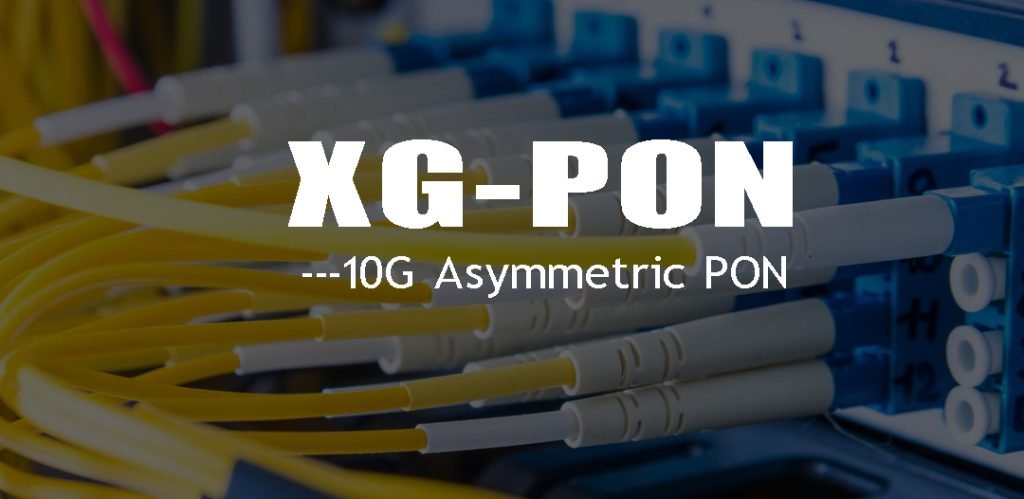XG-PON (10 Gigabit Passive Optical Network) is a new generation of fiber optic access technology evolved from the existing GPON technology. It is an upgraded version of GPON aimed at providing higher transmission rates and longer transmission distances. Compared with GPON, XG-PON has increased transmission rates in the downlink and uplink directions to 10 Gbps and 2.5 Gbps, respectively, providing users with greater bandwidth support.
The technological evolution of XG-PON is mainly reflected in its improvement of optical modulation methods and innovation in multi wavelength technology. These improvements enable XG-PON to better meet high bandwidth applications and future network requirements.
Compared with GPON, XG-PON has significant improvements in bandwidth and transmission rate. This makes XG-PON more suitable for applications that require higher bandwidth, such as 4K/8K video streaming, virtual reality (VR), and augmented reality (AR) applications.
The distance performance of XG-PON is relatively good, which can cover a wider area and provide greater flexibility for long-distance transmission.
XG-PON has a certain compatibility with GPON, which means that operators can gradually upgrade to XG-PON while retaining the existing GPON infrastructure, without the need for a complete replacement of equipment. This smooth upgrade path helps operators to adapt to market demand while maximizing the protection of their investments.
Upgrading to XG-PON also provides users with a better service experience, especially when higher bandwidth is required. This upgrade is particularly important for supporting large-scale high-density user environments.

The development trend of XG-PON in the fiber optic communication field mainly includes the demand for higher speed and adaptability to more business scenarios. With the continuous development of the digital age, the demand for network bandwidth and performance will continue to increase, and XG-PON, as a high bandwidth solution, will continue to play a key role.
In the future, XG-PON may deeply integrate with other technologies such as 5G to provide more comprehensive and flexible solutions to meet the growing demands of the digital society.
The main advantages of FTTH are as follows:
XG-PON and XGS-PON are both 10G PON, which are the two main standards of 10G PON, but they are different.
10G PON | ||
Standards | XG-PON | XGS-PON |
Type | Asymmetric 10G PON | Symmetric 10G PON |
Maximum downlink speed | 9.953Gbit/s | 9.953Gbit/s |
Maximum uplink line speed | 2.488Gbit/s | 9.953Gbit/s |
XG-PON: Asymmetric 10G GPON, providing asymmetric transmission rates, with a maximum downlink rate of 9.953 Gbit/s and a maximum uplink rate of 2.488 Gbit/s. XG-PON meets the demand for high downlink rates while maintaining relatively low uplink rates, making it suitable for most home broadband and business application scenarios.
XGS-PON: Symmetric 10G GPON (10 Gigabit Symmetric Passive Optical Network) is a technological innovation further developed on the basis of XG-PON. Compared with XG-PON, XGS-PON provides symmetrical 10 Gbps transmission rates in both the downlink and uplink directions, with a maximum downlink and uplink rate of 9.953 Gbit/s. This makes it perform excellently in application scenarios that require high support for symmetric data transmission, such as symmetric broadband services and enterprise applications.
Gigabit modem ONT, is a device that converts fiber optic signals into Ethernet signals. Fiber optic modem serves as a signal converter and access device in home or enterprise networks.
Although XG-PON technology can provide 10Gbps bandwidth, in order to actually enjoy this speed, multiple conditions need to be met:
At present, most fiber optic modem devices used in home and enterprise networks may still be based on traditional GPON technology, which may limit the actual access speed. In addition, the actual demand of household and enterprise users often does not reach the level of 10Gbps, which is also one reason why XG-PON technology has not been widely adopted yet.
So, although XG-PON technology can provide higher bandwidth, practical applications still need to consider the quality of fiber optic lines, optical modem equipment, and network access conditions, so not all users can enjoy 10Gbps speed.
They are different mainly from below 3 aspects:
If the central equipment has not been upgraded into XG-PON, it cannot be directly replaced, because the physical layer protocol is different.
And in China now if you had packages above 1000M, they are basically upgraded links,then you can replace it, or else can not.
And the most fast way is to directly consult the on-site installation personnel to see if they can be replaced or not.
Explore more about optical fiber internet solutions, product applications, or products related, Please continue browsing.

Sorry that there’s no information that interests you. Please fill in the feedback form so that we can improve.